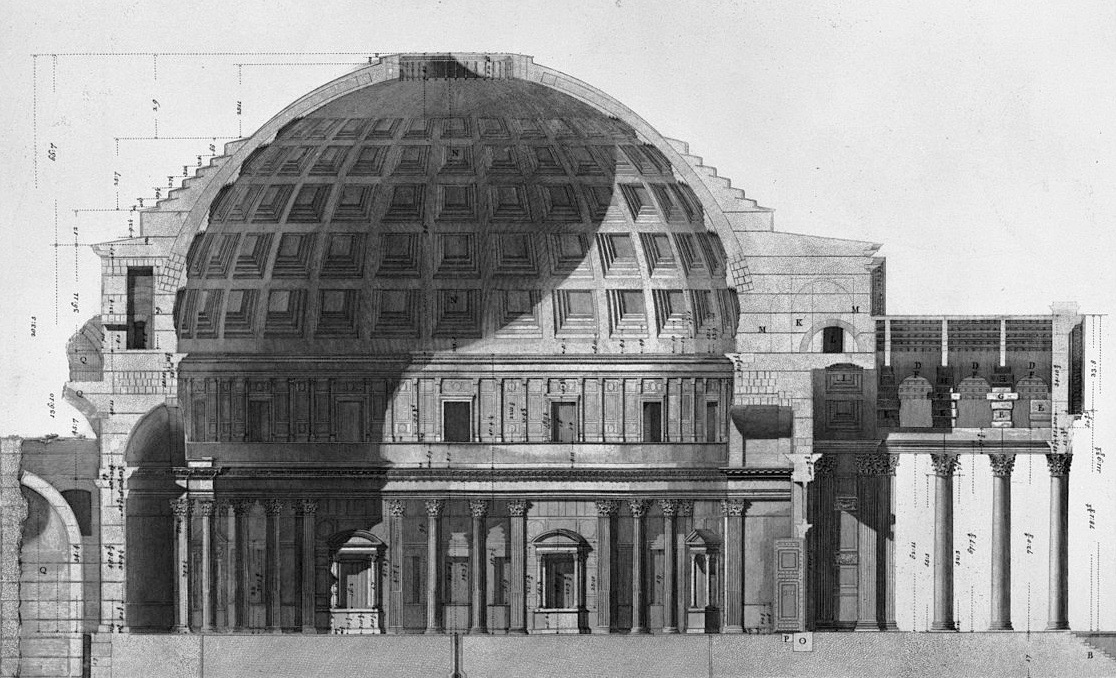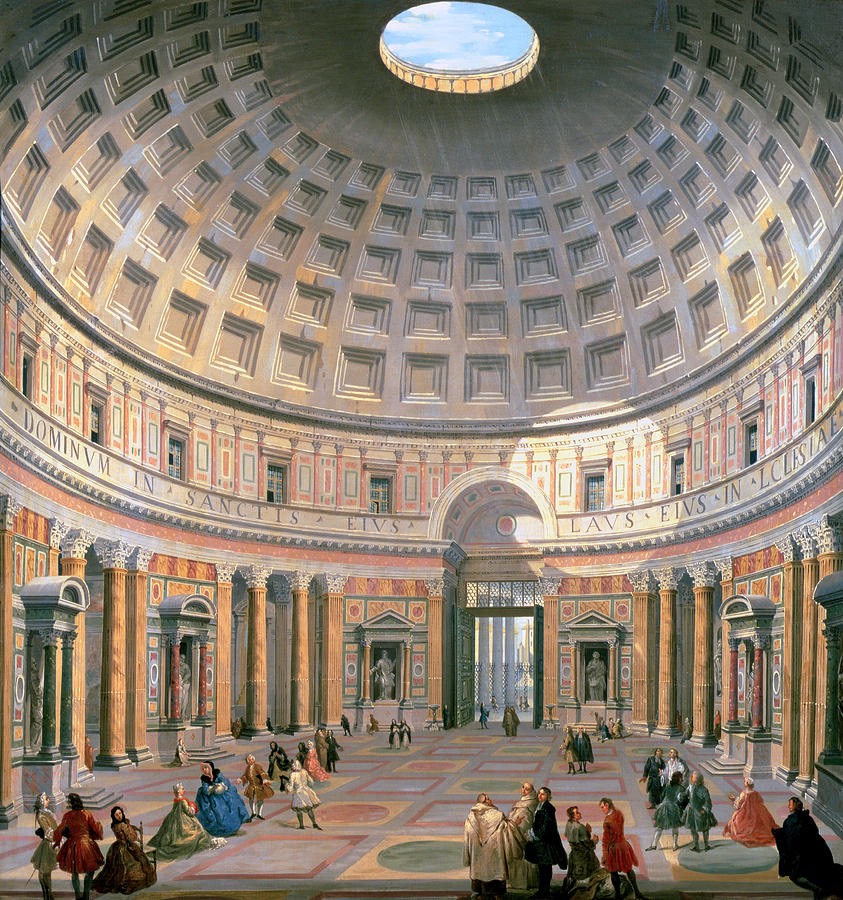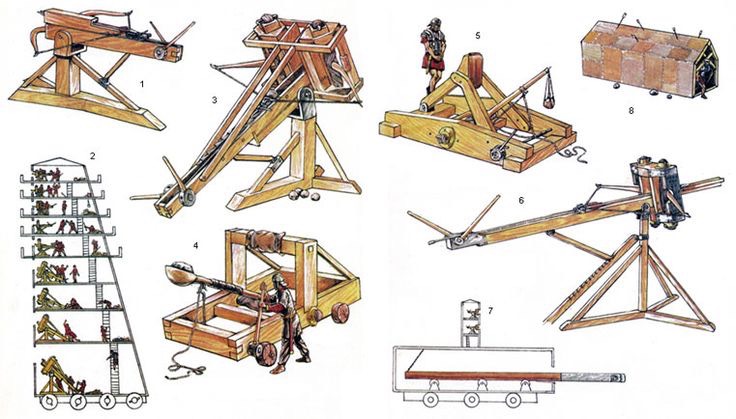The Romans were great engineers and lousy scientists. The list of Roman technological achievements is impressive. They discovered concrete and used it to great effect. They built the first large domed structures, such as the Pantheon:


Interior of the Pantheon around 1700
Their aqueducts were engineering marvels; some of them are still standing:
They also built elaborate baths, such as this restored bath in Bath, England. Can you guess how that town got its name?
The Romans were also the first civilization to engage in deliberate urban planning. Many of their cities began life as military camps, which were always laid out with an east-west road and a north-south road intersecting at the center of camp. This classic cross shape shows up over and over in European towns. The Latin word for “Camp” is “castrum”; we see that word showing up in the names of English towns:
The Romans also built some impressive war machines:

During the Jewish revolt against the Romans in 73 CE, one Jewish group took refuge on the impregnable mesa at Masada, near the Dead Sea. The Romans simply built a dirt ramp up the side of the mesa to capture it:
Much of the ramp has eroded away, but its core can still be seen on the right side of the mesa; it’s a lighter color than the native rock.
But in terms of science, the Romans didn’t amount to much. There were still some Greeks living in Roman times who continued scientific research, such as Hipparchus and Ptolemy.
